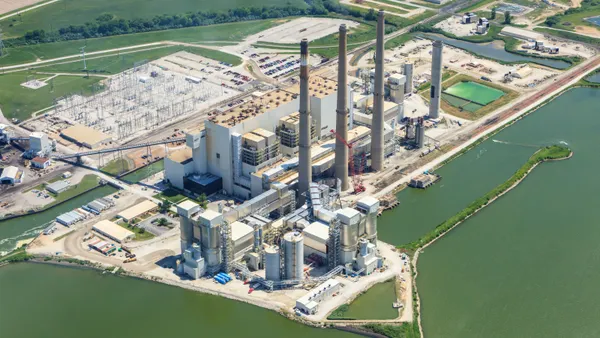Dive Brief:
- More than 1.5 million Puerto Ricans are still without power more than three months since Hurricane Maria, a Category 4 storm, devastated the island's electric grid.
- Official numbers released last week reveal how far shy the government is from its recovery goal: In October, Gov. Ricardo Rosselló had aimed to restore 95% of the island's power by Dec. 15.
- But more help is on the way. Utilities are sending almost 1,500 additional restoration workers through mutual assistance agreements, increasing the total to more than 5,500, according to the Edison Electric Institute.
Dive Insight:
With repairs to the Puerto Rican electric grid now stretching past 100 days, it's clear the devastation from Hurricane Maria was greater than initially thought — and the island less prepared to respond than it had believed.
Workers in Puerto Rico continue to come across unexpected grid damage, even as they slowly piece back together the island's electric grid. According to the New York Times, Puerto Rico has 30,000 miles of distribution lines, 340 substations and 2,400 miles of transmission lines — most of it damaged in the storm.
While Rossello's 95% restoration deadline has come and gone, the U.S. Army Corps of Engineers tapped Fluor Enterprises for an $831 million time-and-materials contract to restore the island's power, and that work is estimated to be complete by Feb. 28.
On Dec. 31, Fluor tweeted that it had restored power to the city of Ciales, the last city in Puerto Rico without power. The company said it had "completed portions of feeder lines to downtown and PREPA energized 900 customers."
At the same time, both Tesla and Sonnen have installed microgrids to bring back power to various parts of the island.
Since an initial false-start that involved a controversial-now-canceled $300 million contract with Whitefish Energy to repair the island's grid, progress is being made. According to EEI, after receiving the request for mutual assistance in November, the group's member companies have been working with the American Public Power Association and the National Rural Electric Cooperative Association to help restore power.
The upcoming deployment of additional crews "represents the next phase in the mutual assistance response," EEI said in a statement. Seven incident management teams have also been deployed to support the Puerto Rico Electric Power Authority's regional directors.
"The incident management teams on the island already have enhanced PREPA's organizational structure and management and logistics capabilities so that PREPA is ready to put these additional lineworkers and support personnel to work as soon as they arrive," EEI President Tom Kuhn said in a statement. "These new crews will help to accelerate the restoration mission and to restore power safely and as quickly as possible for the people of Puerto Rico."














